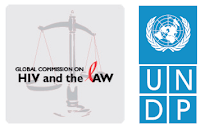By Matthew Weait, Professor of Law and Policy (Birkbeck College, University of London, United Kingdom)
For the
past decade or so I have been privileged to participate in, and contribute to,
national and international policy initiatives concerned with the
criminalization of HIV transmission, exposure and non-disclosure. The people
involved in this work, paid and unpaid, have been tireless in their efforts to
draw the attention of those with legislative power to the negative impact that
punitive responses to people living with HIV, and to those in key populations,
has had and continues to have on prevention efforts and on reducing HIV-related
stigma and discrimination. They could not, I think, have done more.
Yet
punitive responses remain – a stubborn stain that refuse to be shifted (except
for a few notable exceptions). Why is this so? Why, in an era in which
effective treatment (where it is accessible and available) means that people
living with HIV with an early diagnosis have a similar life expectancy to those
without HIV, should people be so afraid of infection that they want to punish
and imprison? And why is this even more apparent in countries where that
treatment is indeed accessible and available (North America, Australasia and
Europe)? It seems to me that the answer lies in an increasingly obsessive focus
on the value of security and in a perversion of that value during the last twenty
years.
There was a
time when we accepted that our bodies were fragile, porous, weak – open to
disease and infection. To be human was to be a much more vulnerable organism,
more susceptible during accidents, childbirth, and illness. As biological,
medical, and pharmaceutical sciences have developed, as we have come
increasingly to believe that we are able to regulate, manage and master the pathological agents that
threaten our physiological integrity.
It is thus
completely explicable that HIV – despite being a manageable, if serious,
chronic illness – should be stigmatized to the point of criminalization. Explicable
because it is a reminder – an embodied reminder – that we are mortal; that the
fantasy we entertain about our bodies is merely that – a fantasy. Any threat to this – including the person who
fails to let us know that they are a potential source of infection, and the
person whose virus might (but doesn’t) escape – is, quite literally,
intolerable.
HIV is an
environmental fact. It coexists with humans. The humans in whom it is embodied
suffer criminalization, stigma, and discrimination not because of HIV itself –
it’s a virus (!) – but because HIV confounds us, challenges us, frightens us,
forces us to acknowledge what being human really means. And these negative
effects of HIV can, and will, only be eradicated (for as long as there is
neither vaccine nor cure) if we learn from the experience and practice of those
who have organized so hard to counter them: if we (re)learn the value of, and
progressive political opportunities that come from, working together and with a
certain degree of humility in the face of nature.
If there is
one legacy from HIV that we might wish to remember, I hope that it is the
reaffirmation of what can be achieved – for ourselves and for others – through
a politics that acknowledges the value of community rather than one that
thrives on the fear of difference.
XXX












